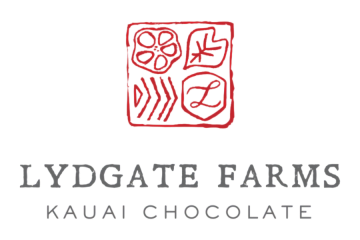On The Farm: Grafting Season
In the summer months, especially in July and August, our cacao trees grow prodigiously. Warm nights help to get the sap and vascular fluids of our cacao trees flowing, and the trees reset from the last season and set fruit for a big fall harvest. Since we don’t harvest cacao in the month of August, it’s a good time for farm projects (in hindsight this would also be a good time for a vacation!). We have been happy planting a few new cacao fields, and we are also doing a lot of grafting, because summer is grafting season. 
Grafting is a process where you take a small piece from a tree that you like, which is called the budwood or scion, and attach it to another tree. The two pieces fuse together and the budwood grows up, replacing the old tree. Grafting is one of the biggest tools we have to improve yields, flavor, disease resistance and growing characteristics. And it’s the only way we can know for certain what we are growing. This is because a tree planted from seed is a sexual cross between a mother tree and a father, a genetic roll of the dice. While you could end up with an amazing new hybrid, you could also end up with something crappy. A lot of trees planted from seed just don’t tend to do well. Grafted trees can increase overall farm yield 100% or more.

A common kind of grafting is done in the tree nursery. The seedlings in this photo above were sprouted from a tree called UH4 (the fourth selection from the University of Hawaii variety trials). We use UH4 because it is a pure Forastero tree with excellent growing characteristics, and recommended to be used as a rootstock by those in the know. We take this rootstock and trim the top, leaving only a few leaves. We then take our budwood, and using a very sharp knife, we slice a careful V shape wedge in the bottom of it. Then a vertical slice is made in the rootstock and the wedge of the budwood is inserted in. If this is done carefully, the vascular tissues of the cambium layer in the two trees will fuse together. The two pieces will become one tree. The graft is covered with a clear grafting tape and then with a small plastic bag to retain moisture. Yes, we get funny looks at the store when we buy these little baggies in large quantities! All in the name of cacao folks.
Mature trees can also be grafted in a process called top working. This would be done when a particular tree has a healthy rootstock but we do not like its other characteristics (i.e. For tiny cacao pods, not many pods, bad architecture we can’t fix, etc.) See here a side bark graft of a variety given the unsexy yet famous name of ICS-95.
And what do we graft with? This is where things get exciting. We use the very best trees we have here on our farm that we are calling our LF series (for Lydgate Farms), along with known varieties that have been selected in research settings like ICS-95 and UH4. What does grafting mean for the chocolate ohana? It means that we are working on the flavor of our chocolate, improving it, and creating new flavors for you to enjoy! And we are working to increase the yields of our farm, so that there will be more chocolate for you!
Do you have experience grafting? Have any questions for us or have something you want us to write about? Send us an email [email protected] – we want to hear from you!
